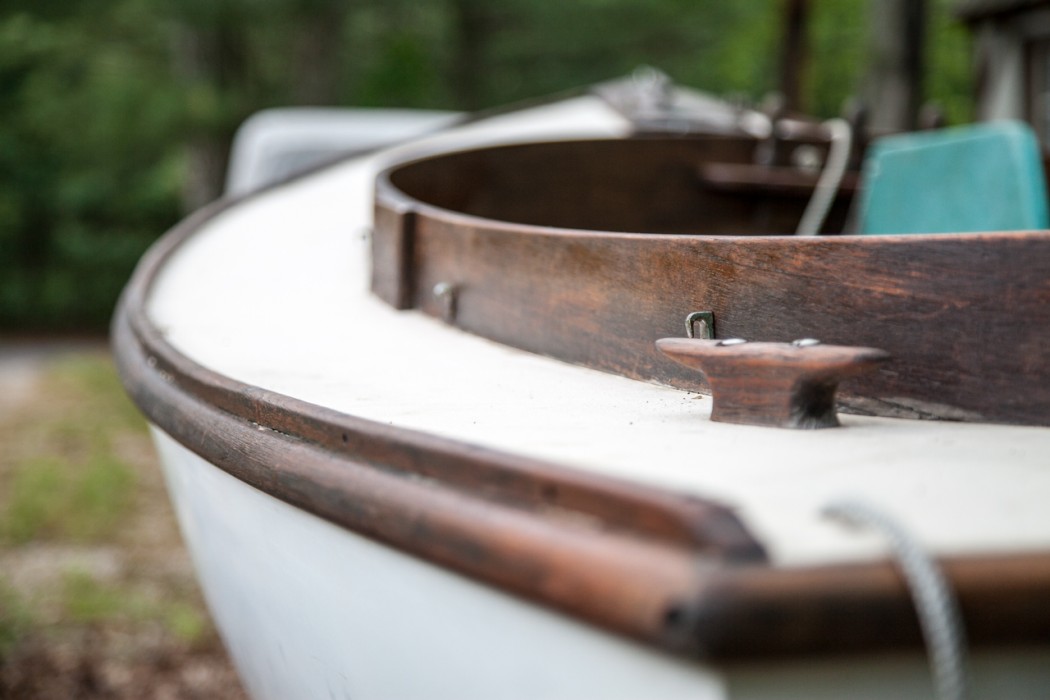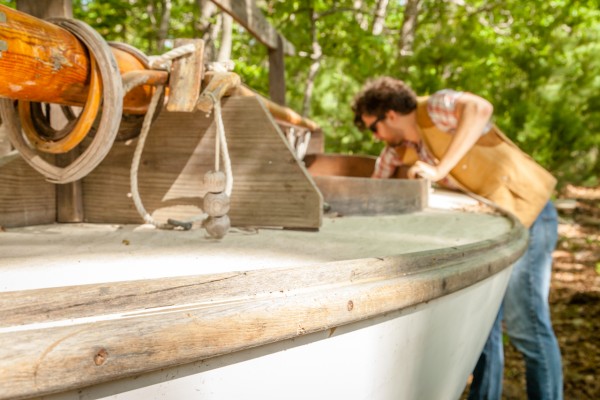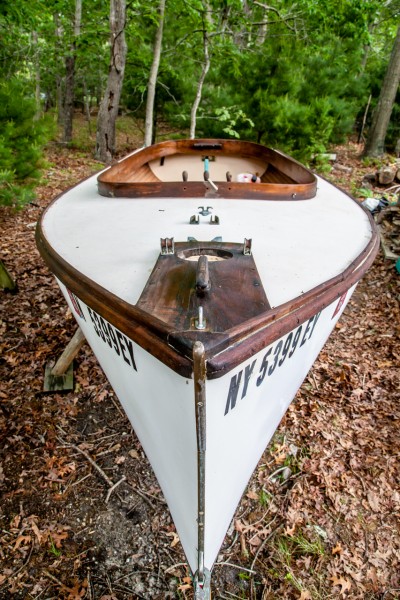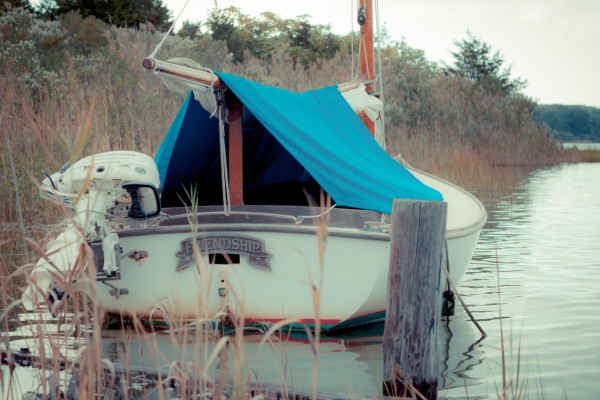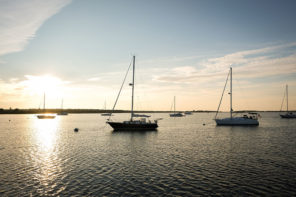Friendship is a 15’ sailboat with a touching history. East-Enders David and Jeanie Stiles, when buying, were in search of a catboat, meaning it has one sail and is about half as wide as it is long, making it prime for group outings and picnics offshore. As an accomplished builder, David first meticulously built a 1′ to 1’ scale model of his dream sailboat and showed it to a friend.
After searching, the two friends collectively came across a vessel, that was the exact life-size version of David’s model, in a used boat catalog. They purchased the boat renaming it, Friendship, and the scale model now sits upon David and Jeanie’s living room mantle in East Hampton.
Since then, every spring for the past 20 or so years, David and Jeanie prepare to dock her once again in Three Mile Harbor.
Ever wondered the process of putting a boat in the water? Well today we have a treat for you. Here’s a little insight into how David and Jeanie put their sailboat in the water each season and how maybe you can apply this to your boat launching and preparation escapades this summer.
Check the mooring.
An anchor located 30’ from the dock will be used to rig the boat out into the water when not in use, and pull it back toward the dock when ready to hop aboard. The anchor chain is connected to a milk jug, which acts as a buoy to locate it in the water. The chain is also attached to pulley through which a rope runs from the dock to where the boat will be anchored. Before putting the boat in the water, it’s important to check that the anchor is still buried, the chain is not rusty and the rope is intact. At low tide, the anchor is about a 7’ or 8’ swim down.
Sand. Clean. Oil.
The boat, while having been sitting covered, has still endured a long winter. The first step after uncovering it is giving it a good scrub with a fiberglass stain remover. Not only does this help clean the vessel; it’s a good opportunity for a full inspection. Be sure to make sure hornets haven’t set up a nest for winter, or you’ll have a rude awakening.
Once the boat is scrubbed, rinsed, dried and it is assumed there are no major repairs required, the Stiles couple sand all the teak on the boat. Taking the time to clean up parts such as the gunnel and coping. Once sanded, it gets oiled down protecting the wood and giving it a rich, renewed look.
Sails out. In the water.
With everything now prepped for aesthetics and boat longevity, the outboard motor, affectionately referred to as the “iron sail” is attached for emergency trips back to port. Then the mast, gaff and boom are attached, the rudder is placed back in, and the odds and ends are tied up before the launch proceeds.
Now, the sail comes out of indoor storage and Friendship is ready for the water. The boat is loaded onto a trailer and everyone heads down to the launching ramp. It can be done alone, but it’s safer and easier when a team is there to direct the boat down the ramp into the water, remembering to keep a hand on an attached line so the boat doesn’t drift off into the bay.
Once in the water, the sails are rigged. And now, The Friendship is ready to sail on with one final addition – the tell-tail to observe the direction of the wind. Now it’s official; summer’s here and it’s off into the sunset for the Friendship.

